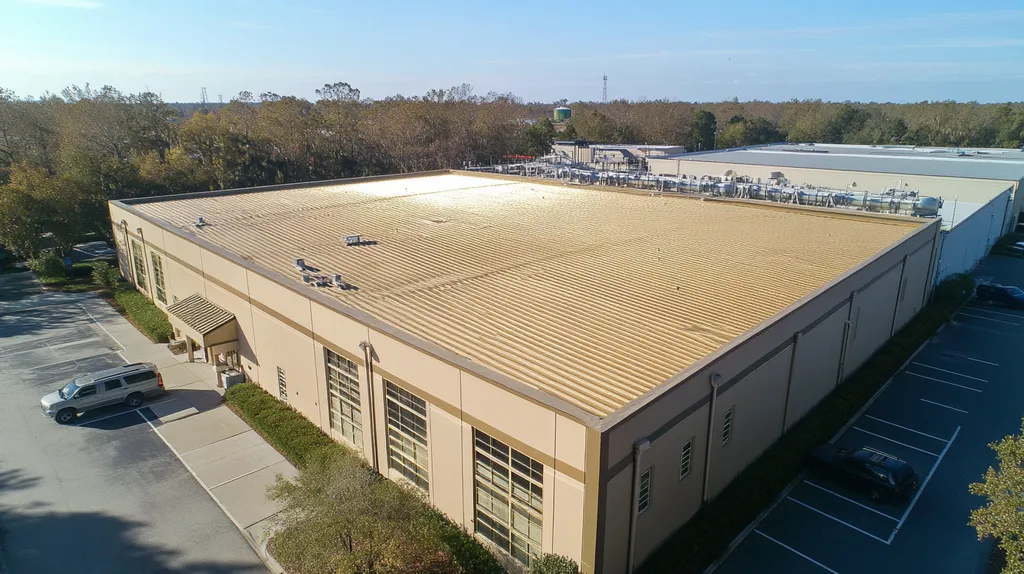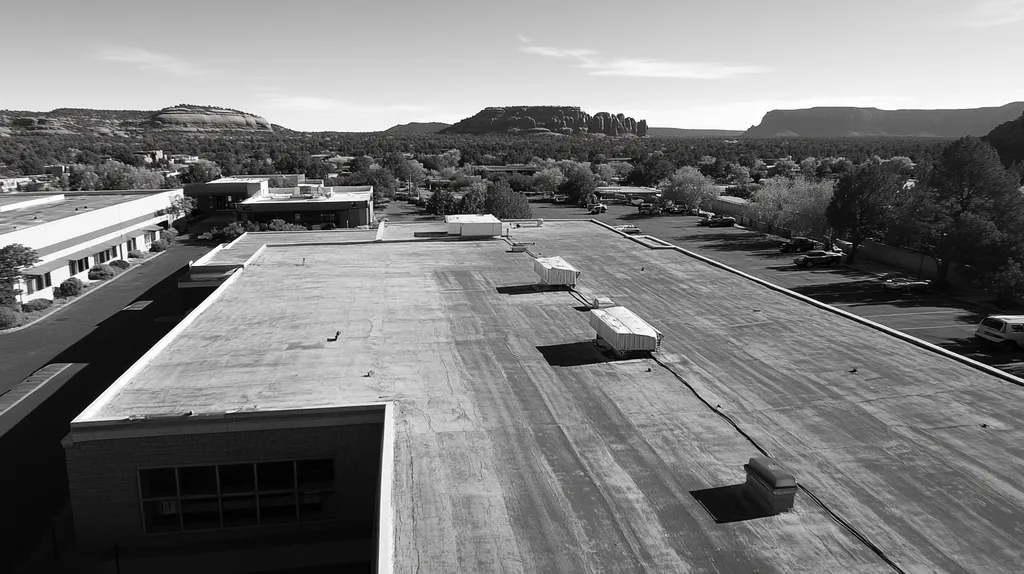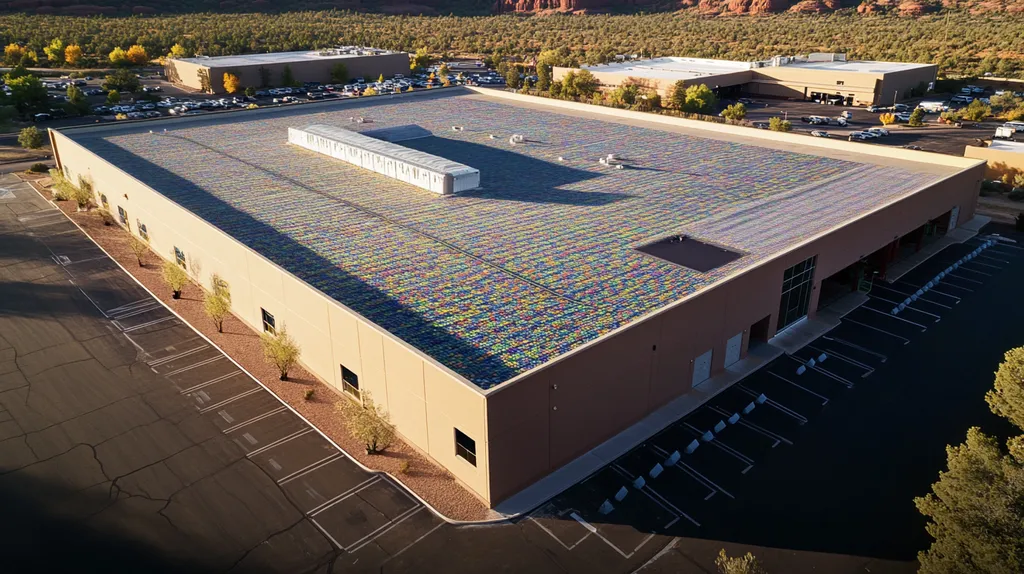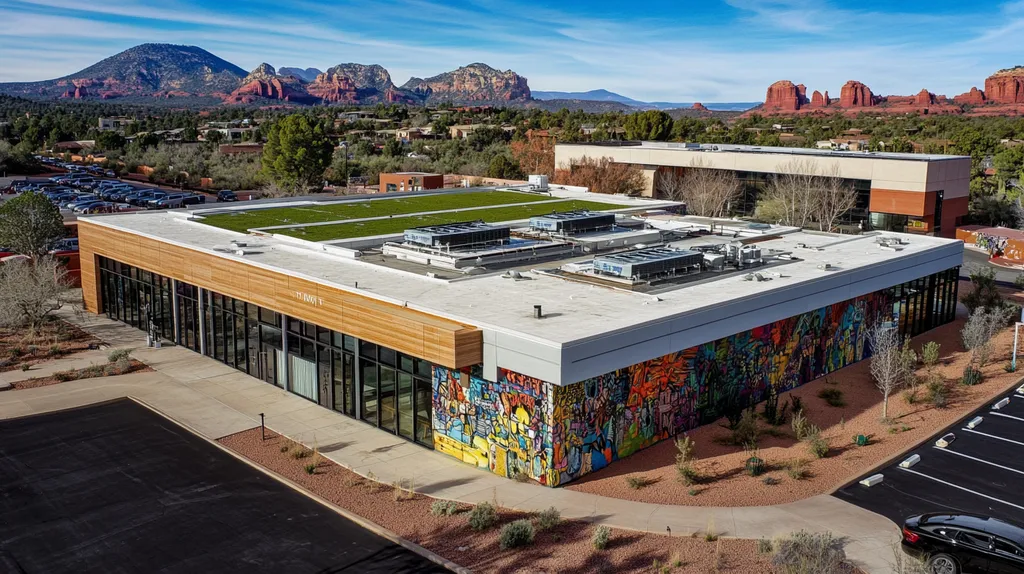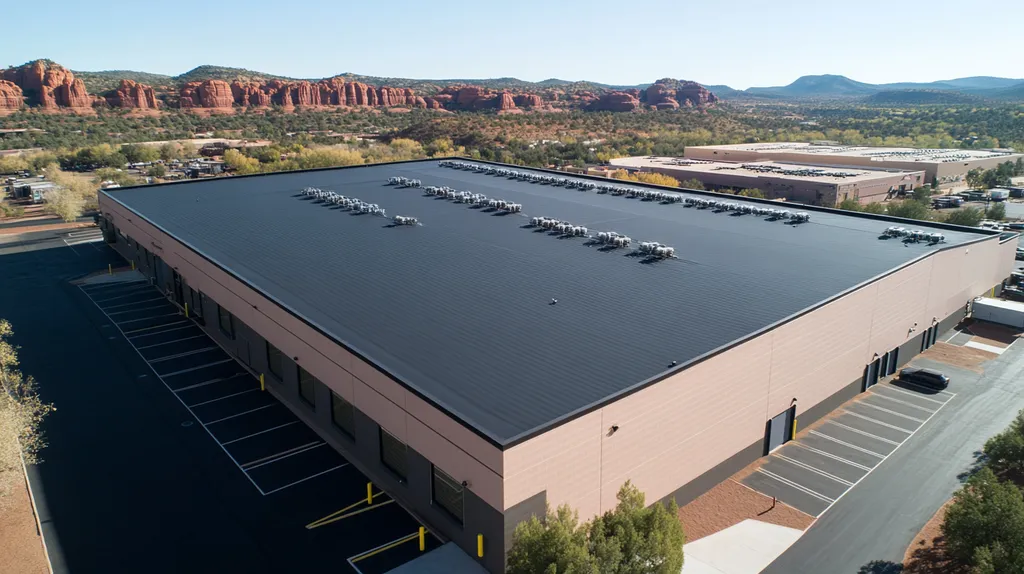Welcome to today’s Battle Royale featuring two roofing heavyweights: “Polyurethane Coatings” in the east corner versus “Polyurea Coatings” in the west!
Tonight’s showdown pits these contenders against each other across six punishing rounds designed to test every aspect of their performance for Ponding Water Management.
At stake? Millions in potential costs, decades of building protection, and the critical performance demands of modern commercial and industrial facilities.
Our professional judging panel will evaluate each round on technical merit, real-world performance, and value delivery. After all six rounds, we’ll declare our ultimate champion.
Ladies and gentlemen, facility managers and building owners… it’s time to rumble!
ROUND 1: INITIAL COSTS & INSTALLATION
In today’s challenging economic climate, industrial facility managers face critical decisions about roofing investments that directly impact their bottom line. With ponding water threatening structural integrity and operational continuity, choosing the right coating system becomes paramount. Understanding the full scope of initial costs and installation requirements helps prevent costly mistakes and ensures optimal protection for valuable assets.
Material Expenses
Material costs represent a significant portion of any industrial roofing project, often accounting for 40-60% of total expenses. Understanding these costs helps facility managers make informed decisions that align with both immediate budgets and long-term protection needs.
Polyurethane coatings typically cost 20-30% less per square foot than their alternatives, making them an attractive option for large-scale industrial applications. Their established market presence and widespread availability contribute to their competitive pricing structure.
Polyurea coatings command premium pricing due to their advanced chemical formulation and enhanced performance characteristics. While the initial investment is higher, their extended service life and superior ponding water resistance can provide long-term value.
Given the substantial difference in upfront costs, polyurethane clearly has the “ADVANTAGE” in this category.
Installation Complexity
The complexity of installation directly impacts project success and long-term performance. Proper application technique ensures coating effectiveness and minimizes the risk of premature failure.
Polyurethane coatings feature user-friendly application methods that require standard equipment and moderate skill levels. Their forgiving nature allows for minor variations in application technique while maintaining effectiveness.
Polyurea coatings demand precise application conditions and highly skilled installers with specialized equipment. The exacting nature of polyurea installation leaves little room for error but delivers superior bonding and performance characteristics.
For its more straightforward application requirements, polyurethane earns the “ADVANTAGE” in installation complexity.
Project Timeline
Project duration significantly impacts facility operations and overall costs. Efficient installation schedules minimize disruption while ensuring proper coating performance.
Polyurethane applications typically proceed at a steady pace, with predictable cure times and straightforward quality control procedures. This reliability allows for accurate project scheduling and resource allocation.
Polyurea installations often require more extensive surface preparation and precise environmental conditions. While the actual coating cures rapidly, the total project timeline can extend due to these additional requirements.
Based on overall project efficiency and predictability, polyurethane claims the “ADVANTAGE” in timeline considerations.
ROUND 1 WINNER: POLYURETHANE COATINGS
ROUND 2: DURABILITY & LIFESPAN
In today’s industrial roofing sector, the battle against ponding water demands solutions that stand the test of time. Every year, facilities face millions in damage from water infiltration and structural deterioration. The choice between polyurethane and polyurea coatings can mean the difference between a roof that fails prematurely and one that provides decades of reliable protection.
Water Resistance Performance
The ability to withstand continuous water exposure represents a critical performance metric for industrial roof coatings. In environments where drainage solutions prove challenging, coating integrity becomes the last line of defense against water damage.
Polyurethane coatings offer moderate resistance to ponding water conditions. While they maintain their protective properties during brief exposure periods, extended contact with standing water can lead to coating softening and eventual degradation.
Polyurea formulations demonstrate superior resistance to prolonged water exposure. Their advanced chemical structure creates an nearly impermeable barrier that maintains its protective properties even under constant water contact.
For its exceptional water resistance capabilities, polyurea claims the “ADVANTAGE” in this category.
Physical Impact Resistance
Industrial roofs face constant stress from maintenance traffic, equipment vibration, and environmental impacts. A coating’s ability to withstand these physical challenges directly affects its protective lifespan.
Polyurethane coatings provide good impact resistance under normal conditions. However, their physical properties can degrade over time, particularly in areas subject to regular foot traffic or mechanical stress.
Polyurea coatings excel in impact resistance, maintaining their protective properties even under heavy use conditions. Their superior tensile strength and elongation properties allow them to absorb impacts without compromising their protective barrier.
Based on superior physical durability, polyurea earns the “ADVANTAGE” in impact resistance.
Weathering and UV Stability
Long-term exposure to weather elements and UV radiation poses significant challenges for roof coating systems. The ability to maintain protective properties under these conditions directly impacts service life.
Polyurethane coatings show good initial UV resistance but may experience gradual degradation over time. This can lead to chalking and loss of protective properties, particularly in areas with intense sun exposure.
Polyurea coatings demonstrate exceptional resistance to UV radiation and weathering effects. Their advanced polymer structure maintains stability even under extreme environmental conditions, ensuring longer-lasting protection.
For superior environmental resistance, polyurea secures the “ADVANTAGE” in weathering stability.
ROUND 2 WINNER: Polyurea Coatings
ROUND 3: PERFORMANCE FACTORS
Every year, industrial facilities face critical decisions about managing ponding water that can make or break their roofing systems. Standing water creates unexpected structural loads that threaten building integrity and safety. Understanding how different coating options perform under these challenging conditions is essential for making informed decisions that protect both assets and occupants.
Adhesion and Substrate Protection
Ponding water can create unexpected structural loads that damage not only the roofing membrane but potentially compromise the entire building structure. Regular inspections and proper coating selection are crucial for preventing these devastating effects. (source: Western Colloid)
Polyurethane coatings provide good initial adhesion to most substrates and create a protective barrier against water infiltration. However, their effectiveness can diminish over time when subjected to constant water exposure.
Polyurea coatings form an exceptionally strong bond with properly prepared substrates and maintain their protective properties even under sustained water contact. Their superior molecular structure resists degradation from prolonged exposure.
For its exceptional substrate protection capabilities, polyurea earns the “ADVANTAGE” in this category.
Chemical and Environmental Resistance
Industrial roofs frequently encounter harsh chemicals, pollutants, and environmental contaminants that can accumulate in ponding water. These concentrated solutions test coating integrity and protective capabilities.
Polyurethane coatings demonstrate adequate resistance to common chemical exposures but may show signs of deterioration when faced with prolonged contact with aggressive substances.
Polyurea coatings excel at resisting chemical attack and maintaining their protective properties even when exposed to concentrated industrial contaminants. Their advanced chemistry provides superior defense against a broad spectrum of chemicals.
Given its superior chemical resistance, polyurea claims the “ADVANTAGE” in this category.
Temperature Cycling Performance
Roof coatings must maintain their protective properties through extreme temperature variations and repeated freeze-thaw cycles. This is especially critical in areas where ponding water regularly freezes and thaws.
Polyurethane coatings handle temperature changes reasonably well but can become brittle in extreme cold or soften significantly in high heat. These property changes may compromise their effectiveness against ponding water.
Polyurea coatings maintain consistent performance across a wide temperature range. Their excellent flexibility and stability through temperature cycles ensure reliable protection against ponding water year-round.
Based on superior temperature stability, polyurea secures the “ADVANTAGE” in performance reliability.
ROUND 3 WINNER: Polyurea Coatings
ROUND 4: MAINTENANCE REQUIREMENTS
Across the industrial roofing sector, inadequate maintenance practices lead to over $3.3 billion in annual repair costs. With ponding water accelerating deterioration rates by up to 300%, choosing a coating system with the right maintenance profile becomes crucial for long-term facility protection. Understanding these maintenance requirements helps facility managers optimize their resources while ensuring consistent roof performance.
Inspection Requirements
Regular roof inspections serve as the foundation for preventing water damage and extending coating lifespans. The frequency and complexity of these inspections directly impact facility maintenance budgets and operational continuity.
Polyurethane coatings demand quarterly inspections to monitor coating integrity and identify early signs of deterioration. Areas prone to ponding water require particular attention, as these locations often show the first signs of coating breakdown.
Polyurea coatings maintain their protective properties longer, allowing for semi-annual inspection intervals in most cases. Their superior resistance to ponding water reduces the risk of hidden deterioration between inspections.
Based on reduced inspection requirements, polyurea claims the “ADVANTAGE” in this category.
Repair Procedures
The complexity and frequency of repairs significantly influence total maintenance costs. Efficient repair procedures minimize facility disruption while ensuring continued protection against water infiltration.
Polyurethane repairs often require extensive surface preparation and precise environmental conditions. The coating’s sensitivity to moisture during application can complicate repair procedures, especially in areas with active leaks.
Polyurea repairs benefit from rapid cure times and excellent adhesion properties. Their ability to bond with existing coatings simplifies repair procedures and reduces facility downtime.
For its superior repair characteristics, polyurea earns the “ADVANTAGE” in repair procedures.
Long-term Maintenance Costs
Maintenance expenses over a coating’s service life can exceed initial installation costs. Understanding these long-term financial commitments helps facility managers make informed decisions about coating selection.
Polyurethane systems typically require more frequent maintenance interventions as they age. The cumulative cost of these interventions, combined with potential coating replacement needs, can significantly impact facility budgets.
Polyurea coatings demonstrate lower maintenance requirements throughout their service life. Their durability and resistance to degradation reduce the frequency and scope of necessary maintenance activities.
Given its reduced lifetime maintenance demands, polyurea secures the “ADVANTAGE” in long-term costs.
ROUND 4 WINNER: POLYUREA COATINGS
ROUND 5: SUSTAINABILITY CREDENTIALS
The industrial roofing sector faces unprecedented pressure to reduce environmental impact while maintaining performance standards. With over 15 billion square feet of commercial roofing replaced annually, coating choices significantly influence both carbon footprint and resource consumption. Today’s facility managers must navigate increasingly strict environmental regulations while ensuring their roofing solutions deliver long-term protection against ponding water.
Recyclability and Lifecycle Impact
The lifecycle management of roofing materials has become a critical environmental concern as landfills reach capacity and disposal costs rise. Understanding a coating’s full environmental impact, from manufacturing through disposal, helps facility managers make sustainable choices that benefit both their operations and the environment.
Polyurethane coatings typically offer limited recycling options and can create disposal challenges at the end of their service life. While some newer formulations incorporate recycled content, the majority still contribute significantly to construction waste.
Polyurea coatings demonstrate superior recyclability and often maintain their chemical stability longer, reducing replacement frequency. Their extended service life and potential for recycling significantly decrease their environmental footprint.
Based on superior lifecycle performance, polyurea earns the “ADVANTAGE” in environmental impact.
Energy Efficiency and Reflectivity
Roof coating energy performance directly impacts both facility operating costs and environmental footprint. High-performance coatings can reduce cooling loads by up to 30%, making their selection crucial for sustainable building operations.
Polyurethane coatings provide good initial reflectivity but often show significant degradation over time. Their diminishing performance requires more frequent recoating to maintain energy efficiency benefits.
Polyurea coatings maintain their reflective properties longer and demonstrate superior resistance to environmental degradation. Their consistent performance delivers sustained energy savings throughout their service life.
For superior long-term energy efficiency, polyurea claims the “ADVANTAGE” in this category.
VOC Emissions and Environmental Compliance
Volatile organic compound (VOC) emissions from roofing materials pose significant environmental and health risks. As regulations tighten globally, choosing low-VOC solutions becomes essential for maintaining regulatory compliance and protecting worker safety.
Polyurethane coatings traditionally contain higher VOC levels, though recent formulations have improved. Their application often requires additional ventilation and safety measures to protect workers and meet environmental standards.
Polyurea coatings feature significantly lower VOC emissions and meet stringent environmental requirements. Their advanced chemistry provides excellent performance while minimizing environmental impact.
Given its superior environmental profile, polyurea secures the “ADVANTAGE” in compliance standards.
ROUND 5 WINNER: Polyurea Coatings
ROUND 6: SPECIALIZED APPLICATIONS
In industrial roofing, specialized applications face unique challenges that test coating performance limits. Each year, facilities lose millions due to inadequate coating solutions in critical areas like chemical processing zones, extreme temperature environments, and high-traffic maintenance paths. Understanding how different coating options perform in these demanding scenarios is crucial for protecting valuable assets and ensuring operational continuity.
Chemical Exposure Resistance
Industrial environments often expose roofing systems to harsh chemicals, corrosive substances, and industrial byproducts. These aggressive compounds can rapidly degrade standard coating systems, leading to premature failure and costly repairs.
Polyurethane coatings offer moderate resistance to common industrial chemicals but may show signs of deterioration when exposed to concentrated acids, bases, or solvents. Their performance can vary significantly based on specific chemical exposures.
Polyurea coatings demonstrate exceptional resistance to a broad spectrum of industrial chemicals. Their advanced molecular structure maintains integrity even under prolonged exposure to aggressive substances.
For superior chemical resistance capabilities, polyurea claims the “ADVANTAGE” in this category.
Extreme Temperature Applications
Many industrial facilities operate in environments with extreme temperature variations or constant high-heat conditions. These thermal stresses can compromise coating integrity and accelerate degradation.
Polyurethane coatings maintain stability within moderate temperature ranges but may become brittle in extreme cold or soft in high heat. This limitation restricts their use in certain specialized applications.
Polyurea coatings excel in extreme temperature environments, maintaining their protective properties from -40°F to 350°F. Their thermal stability ensures consistent performance across diverse operating conditions.
Based on superior temperature resistance, polyurea earns the “ADVANTAGE” in extreme conditions.
High-Traffic Areas
Industrial roofs often include designated maintenance paths, equipment mounting areas, and service zones that endure constant foot traffic and mechanical stress. These high-wear areas require exceptional durability to maintain waterproofing integrity.
Polyurethane coatings provide adequate wear resistance for occasional maintenance traffic but may show premature wear in heavily trafficked areas. Their softer nature can lead to accelerated deterioration under constant stress.
Polyurea coatings deliver superior abrasion resistance and maintain their protective properties even under heavy traffic conditions. Their exceptional tensile strength and elasticity prevent wear-through and coating failure.
Given its superior durability, polyurea secures the “ADVANTAGE” in high-traffic applications.
ROUND 6 WINNER: POLYUREA COATINGS
AND THE WINNER IS…
After six grueling rounds of technical evaluation, we have our verdict…
In a commanding performance, winning five out of six rounds, POLYUREA COATINGS claims the championship belt as the ultimate ponding water defender!
This technical knockout showcased polyurea’s devastating combination of superior durability, exceptional chemical resistance, and unmatched performance in extreme conditions. From maintenance requirements to sustainability credentials, polyurea demonstrated why it’s the heavyweight champion of industrial roofing protection.
But don’t count polyurethane out completely! Its lower initial costs and simpler installation requirements make it a strong contender for projects where budget constraints are the primary concern and ponding water exposure is limited.
IMPORTANT NOTICE: While this analysis reflects general industry performance patterns, every facility faces unique challenges. Local climate conditions, building specifications, and operational requirements can significantly impact coating performance. Property owners and managers should always consult with qualified roofing professionals who can evaluate their specific situation and recommend appropriate solutions.
Ladies and gentlemen, in the high-stakes world of industrial roofing, remember: The true victory comes not just from choosing a champion, but from matching your facility’s specific needs with the right contender’s strengths. Choose wisely, and protect your assets like a champion!
FREQUENTLY ASKED QUESTIONS
Q. What are the initial costs of a commercial roof coating?
A. Initial costs can vary significantly based on the coating type. Polyurethane coatings are often more cost-effective, typically being 20-30% less expensive per square foot compared to polyurea coatings. However, consider long-term benefits alongside initial investments to make the best decision for your facility.
Q. How do the durability and lifespan of these coatings compare for industrial roofs?
A. Polyurea coatings generally offer superior durability and lifespan. They maintain their protective properties even under prolonged water exposure and harsh conditions. In contrast, polyurethane coatings can show signs of degradation over time, particularly in demanding environments.
Q. What performance factors should I consider for commercial roofing?
A. Key performance factors include adhesion, water resistance, and temperature cycling performance. Polyurea coatings excel in these areas, maintaining integrity under constant water exposure and extreme temperatures, while polyurethane options may falter under similar conditions.
Q. What are the maintenance requirements for industrial roof coatings?
A. Polyurethane coatings necessitate more frequent inspections and repairs, typically quarterly, due to their vulnerability in demanding conditions. Conversely, polyurea coatings can often go six months or longer between inspections, reducing overall maintenance efforts and costs.
Q. How do sustainability credentials impact coating choice for commercial roofs?
A. Sustainability is increasingly critical. Polyurethane coatings usually have limited recycling options and higher environmental impact. In contrast, polyurea coatings boast better recyclability, lower VOC emissions, and superior energy-saving properties, making them more environmentally friendly.
Q. What specialized applications can benefit from specific roofing coatings?
A. Facilities with extreme temperature variations, high-traffic areas, or chemical processing zones benefit greatly from appropriate coatings. Polyurea coatings provide superior performance in these specialized applications, resisting wear and maintaining integrity under stress, while polyurethane may fall short.
Q. How do local building codes impact commercial roof coating selection?
A. Local building codes can dictate the types of roofing materials and coatings permitted. It’s essential to consult regulations for your specific area, as compliance ensures safety, sustainability, and can significantly influence roofing system performance and longevity.

